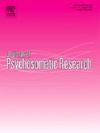精神疾病和心血管疾病之间因果关系的遗传证据。
IF 3.5
2区 医学
Q2 PSYCHIATRY
引用次数: 0
摘要
目的:我们的主要目的是探讨12种精神疾病(pd)与心房颤动(AF)、冠状动脉疾病(CAD)、心肌梗死(MI)和心力衰竭(HF)之间的因果关系。方法:首先采用连锁不平衡评分回归方法计算12种PDs与4种心血管疾病的遗传相关性。随后,我们对具有显著遗传相关性的表型进行了双样本和双向孟德尔随机化(MR)分析,以探索PDs和cvd之间的因果关系。因果效应评价采用修正权逆方差加权法(MW-IVW)、稳健调整轮廓评分法(Robust Adjusted Profile Score)、反方差加权法(Inverse variance weighted)、加权中位数法(weighted median)和加权模式(weighted mode),以MW-IVW为主要分析方法。为了验证MR结果,我们使用FinnGen数据库中的数据进行了重复分析。结果:通过对具有显著遗传相关性的表型进行MR分析,我们确定了抑郁症(DEP)和心肌梗死(DEP)之间的双向因果关系:OR = 1.1324, 95%置信区间(CI): 1.0984-1.1663, P结论:在我们的研究中,我们对12例pd和cvd进行了综合分析。通过双向MR分析,我们观察到MI与DEP、HF和ADHD之间存在显著的因果关系。这些发现表明,PDs和cvd之间可能存在复杂的因果关系。本文章由计算机程序翻译,如有差异,请以英文原文为准。

Genetic evidence of the causal relationships between psychiatric disorders and cardiovascular diseases
Objective
Our primary objective is to investigate the causal relationships between 12 psychiatric disorders (PDs) and atrial fibrillation (AF), coronary artery disease (CAD), myocardial infarction (MI), and heart failure (HF).
Methods
Firstly, we used linkage disequilibrium score regression to calculate the genetic correlations between 12 PDs and 4 cardiovascular diseases (CVDs). Subsequently, we performed two-sample and bidirectional Mendelian randomization (MR) analyses of phenotypes with significant genetic correlations to explore the causal relationships between PDs and CVDs. Inverse variance weighted with modified weights (MW-IVW), Robust Adjusted Profile Score, Inverse Variance Weighted, weighted median and weighted mode were used to evaluate causal effects, with MW-IVW being the main analysis method. And to validate the MR results, we conducted the replicate analyses using data from the FinnGen database.
Results
Conducting MR analyses in phenotypes with significant genetic correlations, we identified bidirectional causal relationships between depression (DEP) and MI (DEP as exposure: OR = 1.1324, 95 % confidence interval (CI): 1.0984–1.1663, P < 0.0001; MI as exposure: OR = 1.0268, 95 % CI: 1.0160–1.0375, P < 0.0001). Similar relationships were observed in Attention Deficit/Hyperactivity Disorder (ADHD) and HF (ADHD as exposure: OR = 1.0270, 95 % CI: 1.0144–1.0395, P < 0.0001; HF as exposure: OR = 1.0980, 95 % CI: 1.0502–1.1458, P < 0.0001).
Conclusions
In our study, we conducted the comprehensive analyses between 12 PDs and CVDs. By bidirectional MR analysis, we observed significant causal relationships between MI and DEP, HF and ADHD. These findings suggest possible complex causal relationships between PDs and CVDs.
求助全文
通过发布文献求助,成功后即可免费获取论文全文。
去求助
来源期刊
CiteScore
7.40
自引率
6.40%
发文量
314
审稿时长
6.2 weeks
期刊介绍:
The Journal of Psychosomatic Research is a multidisciplinary research journal covering all aspects of the relationships between psychology and medicine. The scope is broad and ranges from basic human biological and psychological research to evaluations of treatment and services. Papers will normally be concerned with illness or patients rather than studies of healthy populations. Studies concerning special populations, such as the elderly and children and adolescents, are welcome. In addition to peer-reviewed original papers, the journal publishes editorials, reviews, and other papers related to the journal''s aims.

 求助内容:
求助内容: 应助结果提醒方式:
应助结果提醒方式:


